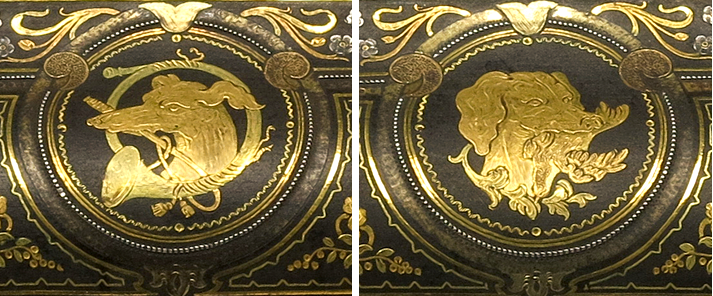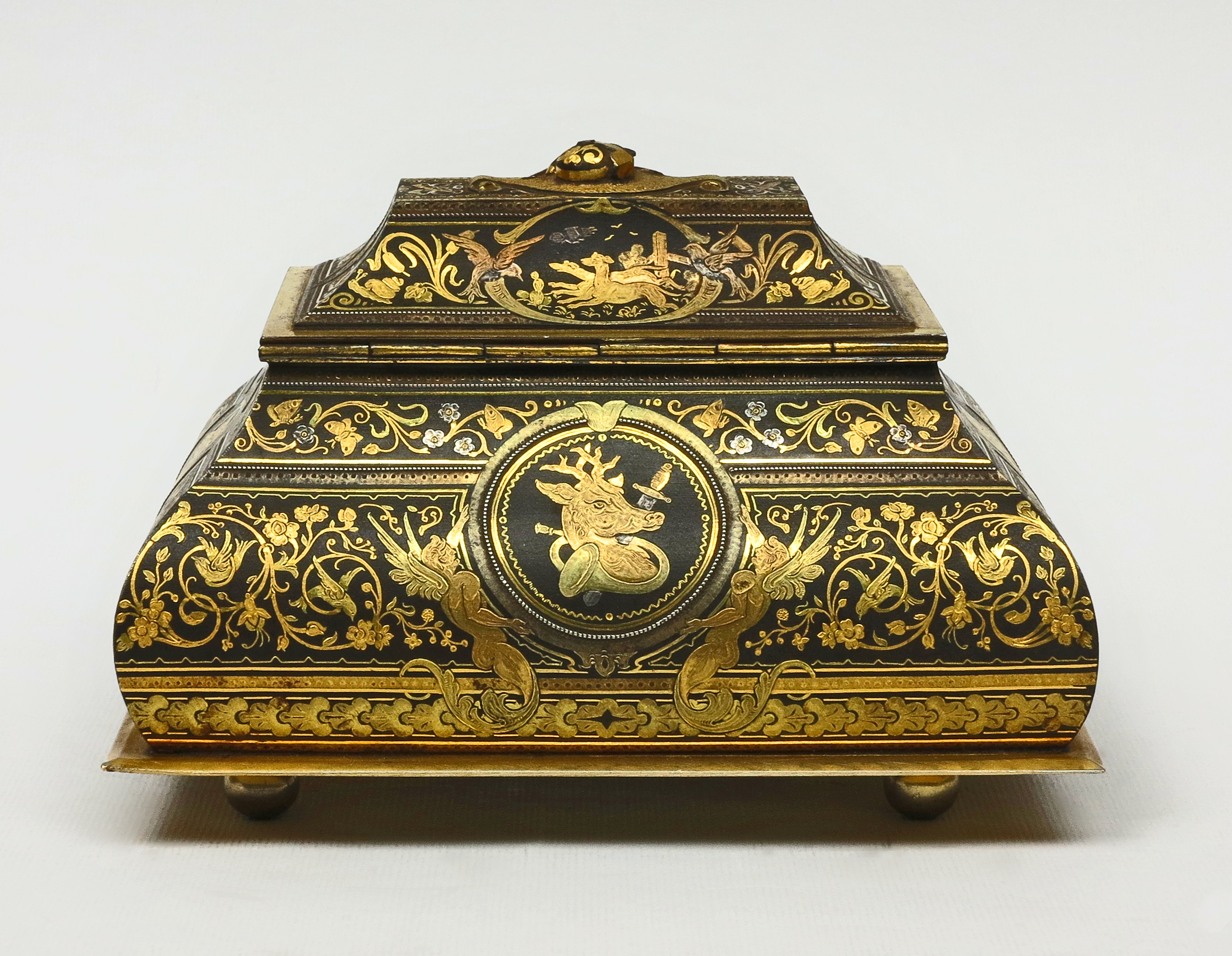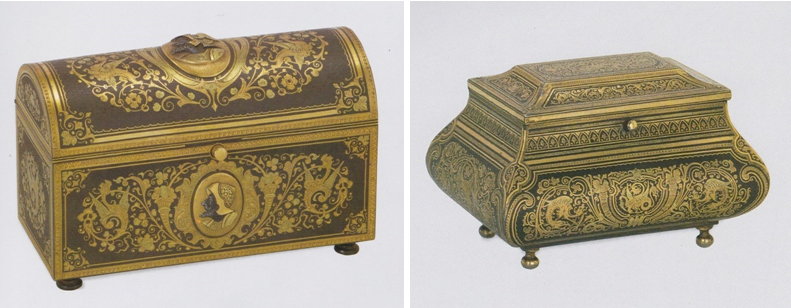
A Precious Damascened Casket
This precious casket made of embossed iron damascened with gold and silver – rounded body with a “pagoda-shaped” lid resting on four ball feet – features extraordinary decoration on its outer surface in eclectic taste, which clearly recalls the late Renaissance and Baroque style, with dynamic and engaging illustrations marked by outstanding realism and a strong naturalistic component.

A scene – with a man on horseback hunting a deer with the help of his dogs, framed by two monumental volutes with oak leaves supported by two Michelangelesque winged Telamons – decorates the front of the casket, under a cartouche with the maker signature (“Valle”). On the short sides two roundels appear in the center of each short side: one with a dog’s head and a hunting horn and one with a dog’s head holding a bird in its mouth. On the back side, a roundel with a deer’s head and a hunting horn appears in the middle, supported by two winged sirens.

On the long sides of the lid two ovals can be seen, animated again by hunting scenes with dogs. Finally, on the “pagoda-shaped” lid stands out, in a cartouche, a beautiful manly profile in armor in strong relief. The surface of the casket is then further decorated on all sides with natural elements such as birds, flowers, snails, butterflies and various fruits.

Particularly refined for its design and execution, this work of art ranks at the top of the imaginative and unmistakable Spanish tradition of damascening. Worthy heirs of the great Renaissance tradition, a number of important workshops specialized in damascening technique were active in Spain in the late 19th and early 20th centuries, including the famous ones of the Zuloagas in Eibar and the Alvarezes in Toledo, as well as others such as the one of the casket presented here.

By way of comparison we mention, among others, two caskets very similar to the one here presented are published in the volume “The Art and the Tradition of the Zuloagas”.

CASKET
Iron, damascened with gold and silver
Spain (Eibar or Toledo)
Late 19th century
Cm 8 x 12,5 x 10
Signed: Valle (in a cartouche on the front)
References: J. D. Lavin, R. Larrañaga, The Art and Tradition of the Zuloagas, The Khalili Family Trust, 2007, cat 94-95.
© 2013 – 2024 cesatiecesati.com | Please do not reproduce without our expressed written consent
Alessandro Cesati, Via San Giovanni sul Muro, 3 – 20121 Milano – P.IVA: IT06833070151